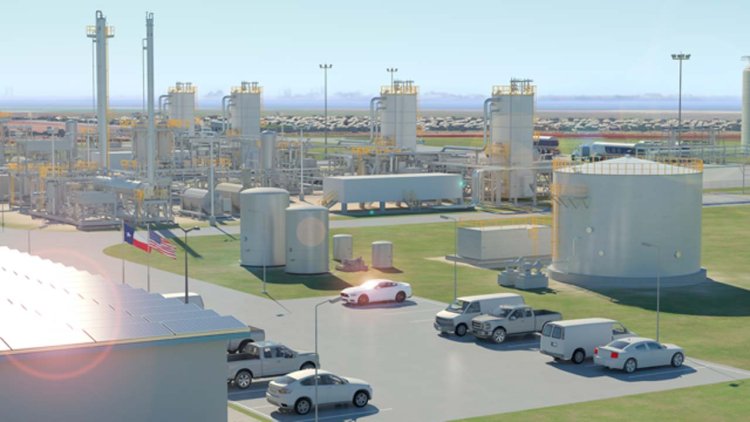Galveston LNG Bunker Port joins SEA-LNG coalition
The shore-based LNG liquefaction facility will be located on Shoal Point in Texas City, part of the greater Houston-Galveston port complex, one of the busiest ports in the USA.

Galveston LNG Bunker Port (GLBP) has joined SEA-LNG – further enhancing the industry coalition's LNG supply infrastructure expertise and global reach, while giving GLBP access to the latest LNG pathway research and networking opportunities.
GLBP was announced in September 2023 and will develop, construct and operate the US Gulf Coast's first dedicated facility supporting the fuelling of LNG-powered vessels, expected to be operational late-2026.
The shore-based LNG liquefaction facility will be located on Shoal Point in Texas City, part of the greater Houston-Galveston port complex, one of the busiest ports in the USA. This is a strategic location for cruise ship LNG bunkering in US waters, as well as for international ship-to-ship bunkering and cool-down services. GLBP will offer cost-effective turn-key LNG supply solutions to meet growing demand for the cleaner fuel in the USA and Gulf of Mexico.
Commenting on joining SEA-LNG and on the GLBP project, Jonathan Cook, Pilot CEO said:
"With an initial investment of approximately $180 million, our LNG bunkering facility will supply a vital global and U.S. trade corridor with cleaner marine fuel. We recognise that SEA-LNG is a leading partner and a key piece of the LNG bunkering sector, and will give us access to insights and expertise across the entire LNG supply chain.
"LNG supports environmental goals and human health by offering ship operators immediate reductions in CO2 emissions and virtually eliminating harmful local emissions of sulphur oxides (SOx), nitrogen oxides (NOx) and particulate matter."
Chairman of SEA-LNG Peter Keller said:
"We're proud to welcome another leading LNG supplier to the coalition and are looking forward to a mutually beneficial relationship. With every investment in supply infrastructure in the US and worldwide, the LNG pathway's head start increases. Global availability, alongside bio-LNG and e-LNG development, makes LNG the practical and realistic route to maritime decarbonisation.
"All alternative fuels exist on a pathway from grey, fossil-based fuels to green, bio or renewable fuels. Green fuels represent a scarce resource and many have scalability issues, so we must start our net-zero journey today with grey fuels. LNG is the only grey fuel that reduces greenhouse gas emissions, well-to-wake, so you need less green fuel than alternatives to improve emissions performance," Keller continued.
LNG bunkering infrastructure can deliver LNG and carbon-neutral bio-LNG today, as well as e-LNG, as and when it becomes available, to existing LNG-fuelled vessels with no modifications required. These net-zero fuels can be dropped in and blended with grey LNG at any ratio. As a result, GLBP and SEA-LNG recognise that LNG offers a practical, incremental pathway to net-zero shipping.



























